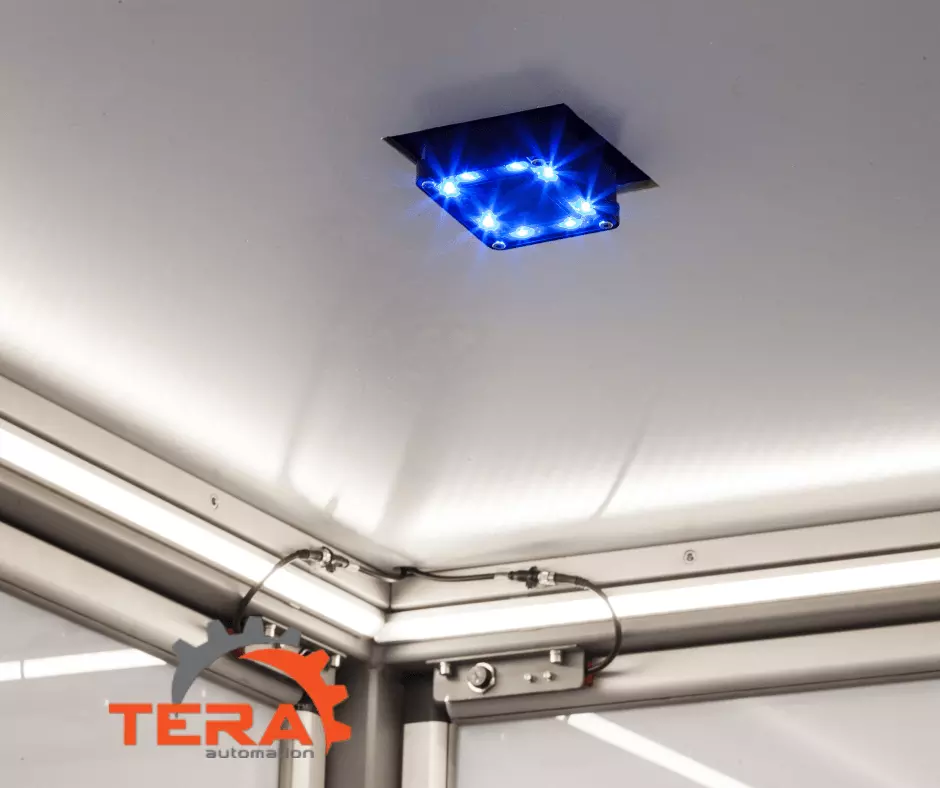
THE VALUE OF VISION SYSTEMS IN ROBOTIC CELLS
When referring to industrial automation, artificial vision systems are an essential tool. But what is an artificial vision system? What advantages can it provide when installed in a robotic cell?
What is a vision system?
A vision system is an electronic device that performs artificial vision functions. This technology simulates what an operator would do when he sees and interprets what happens in front of his eyes. So, it does what a human being would do – it observes and allows machines to perform control or industrial automation operations automatically.
Before delving into how it is done and what it does, let's see what the components of a vision system are:
- Electro optical devices
- Lighting system
- The object to be inspected
- The image acquisition and processing system
- Human-machine interfaces
How is it made?
Vision systems are easy to use and maintain, but most importantly they offer reliable and repeatable performances. So, let's see how they are made.
First, the hardware: vision systems can be infrared thermo-cameras, digital and non-digital cameras, image sensors and processors, optical scanner cameras. They are all technologically advanced image detection tools.
However, the real protagonist of vision systems is the software because it generates the data we want to obtain. The software, therefore, must be able to process all kinds of images, transform them into data and make them available for the company. Operators who use robotic cells only have to start the process and receive the result. Looking at even more advanced solutions, it is possible to implement the vision system with Artificial Intelligence Machine Learning and Deep Learning technologies. As a result, the robotic cell, the automation or the robot itself will be more autonomous, because they are able to self-educate and make decisions.
What does it do?
In a vision system, one or more integrated cameras are able to acquire and process images while an internal and/or external software and a lighting system deal with:
- generating information, that is to physically and visually characterize physically what is relevant to see;
- acquiring images;
- processing images, i.e. extracting the characteristics of interest;
- automatically interpreting the results obtained in order to reach a unique and automatic result.
Inside an automated line or robotic cell, the information processed by the vision system is then sent automatically (without the help of a human operator) to a robot or any other machinery or plant to perform a certain operation based on the obtained result. For example, for the rejection of a faulty piece or the sorting of different product types.
2D and 3D
Finally, a vision system can be 2D or 3D. In the first case, the acquired image of the observed object is flat, 2D, without any information relating to height and depth.
On the other hand, 3D vision systems acquire three-dimensional information of objects and surfaces in digital format. The latter (especially if applied in robotic cells) are used in the so-called bin picking, which is the direct picking of pieces in bulk from a bin.
Another advantage of 3D vision systems is their countless applications: dimensional and quality control, reverse engineering, automation, rapid prototyping, three-dimensional reconstruction and virtualization.
A winning example: vision systems and secondary machining processed items
The most widespread application of vision systems is that of quality control to quickly identify any kind of product defect and take action to solve any critical issues.
A concrete example is our T-Photo Viewer for the precious metals industry, which is used to check for the presence of stains or other imperfections on the upper surface of ingots and/or to verify by OCR the stamping of the logo and the correct serial number. The images acquired through these vision systems can be stored in the system with the relevant data.
Great advantages, there’s no doubt. However, it is in our CNC-controlled robotic cells, and in particular in the machining of fashion accessories, that our vision systems have completely revolutionized the production approach – thanks to the combination with T-Loop Feeder, an innovative raw piece feeding system with opposing-motion parallel conveyor belts.
In this case, the vision system is placed above the workpiece gripping area and continuously monitors their position during their movement on the belts. Thanks to the presence of additional front illumination, the vision system can also determine the orientation of the workpieces.
The conveyor belts are stopped when a workpiece is in the correct position the vision system communicates the coordinates to the robot. The robot picks up the piece from the conveyor belt and places it on the zeroing template. Then it picks it up again in the appropriate position to be loaded on the CNC vise. The zeroing template is provided with a photocell that detects the presence of workpieces, which activates a jet of air to blow non-compliant ones into the recovery area placed below it. In the meantime, the circulation of the belts is reactivated to allow the grip of the following piece.
A process that is longer to explain than to carry out, but which encompasses this revolution in the production process in secondary machining.
What are the advantages of a vision system in a robotic cell?
After seeing a specific example of success, it’s important to notice that vision systems have many advantages in many other fields of application, especially when installed in automated lines or in robotic cells. These benefits arise from some key tasks that vision systems can perform or assist:
- Recognition of flaws and observance with tolerances in quality control;
- Orientation, positioning and robot guidance;
- Screwing, rivet applications, hole presence and completeness check;
- Non-contact measurements;
- Pick-up of objects arranged in bulk inside crates;
- Check of objects on continuous motion conveyor belts;
- Classification and selection;
- Reading of characters and codes;
- Comparison between CAD and 3D recostruction;
- Product tracking.
